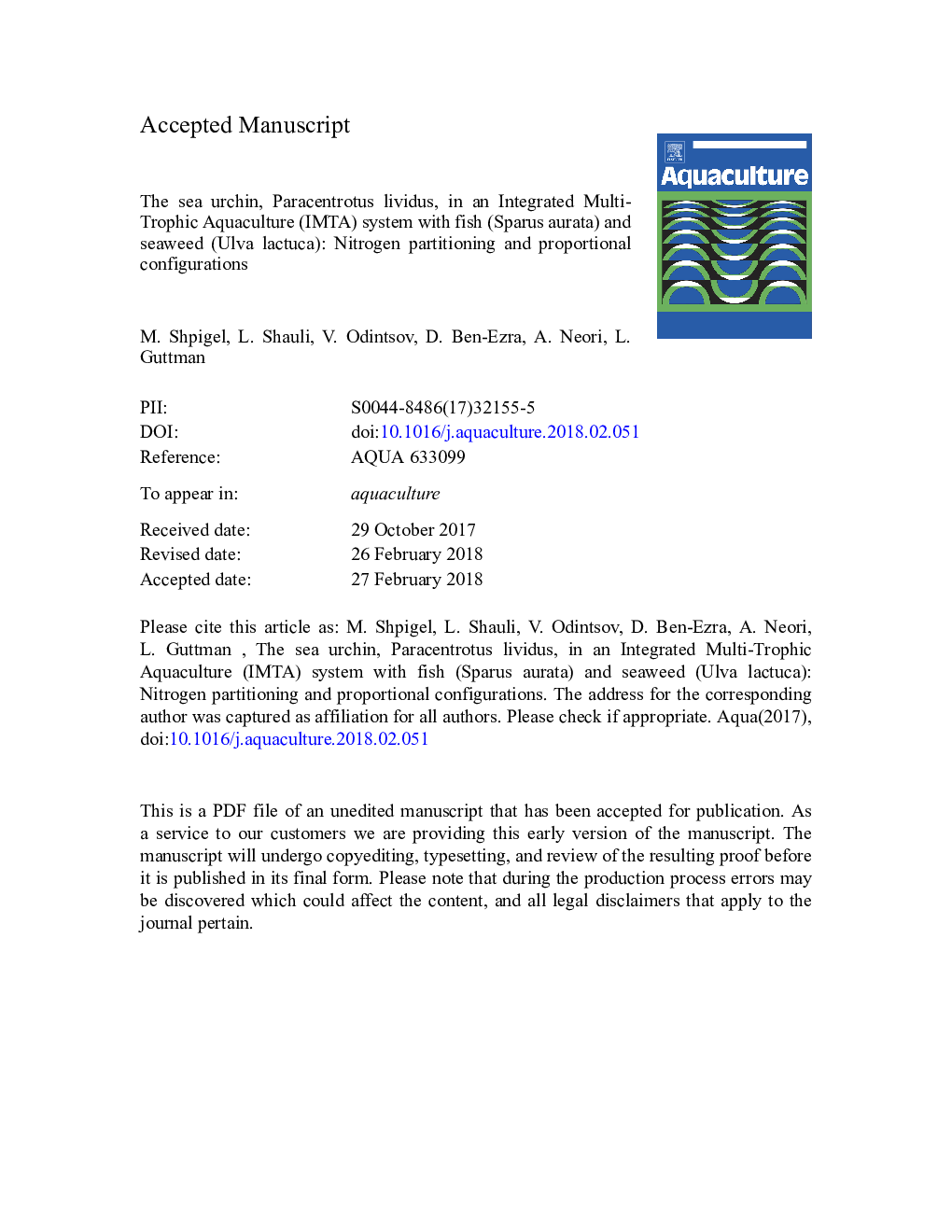| Article ID | Journal | Published Year | Pages | File Type |
|---|---|---|---|---|
| 8493334 | Aquaculture | 2018 | 39 Pages |
Abstract
The long-term (460â¯days) performance of the macroalgivore sea urchin Paracentrotus lividus was evaluated in a semi-commercial land-based Integrated Multi-Trophic Aquaculture (IMTA) system. IMTA-produced Ulva lactuca considerably reduced nitrogen loads from the effluents by assimilating 74% of the DN and became itself a valuable crop for P. lividus. U. lactuca showed relatively fast growth and constant high protein and lipid levels throughout the year, presumably due to the continuous steady supply of nutrients from the fish pond and the minimal disturbance by grazers and epiphytes. P. lividus fed IMTA-produced U. lactuca exhibited high somatic growth rate (1.4â¯mmâ¯monthâ1), high gonad somatic index (SGI), and high quality, bright-orange gonads. Fish assimilated 21.9% of the nitrogen in the feed and their faeces contained 10.1% of it. P. lividus assimilated 13.86% of the nitrogen and their faeces contained 19.9% of it. It is suggested that 4.96â¯kg of the nitrogen was released during spawning, which occurred in January, May and December. Surface area ratio between the three compartments in the IMTA system was maintained at 1:3:4 for fish, Ulva and sea urchins, respectively. Annual yield production ratio (kgâ¯m3â¯yâ1) was 3.5:10:1 for fish, Ulva and sea urchins, respectively. Annual yield using 1365â¯kg feed (45% protein) was 821, 7045 and 919â¯kg for fish, Ulva and sea urchins, respectively. Fish attained marketable size at the end of the first year. In addition to enhancing sea urchin performance, using the protein-rich U. lactuca biofilter considerably improved the system's sustainability and waste management.
Related Topics
Life Sciences
Agricultural and Biological Sciences
Aquatic Science
Authors
Shpigel M., Shauli L., Odintsov V., Ben-Ezra D., Neori A., Guttman L.,
